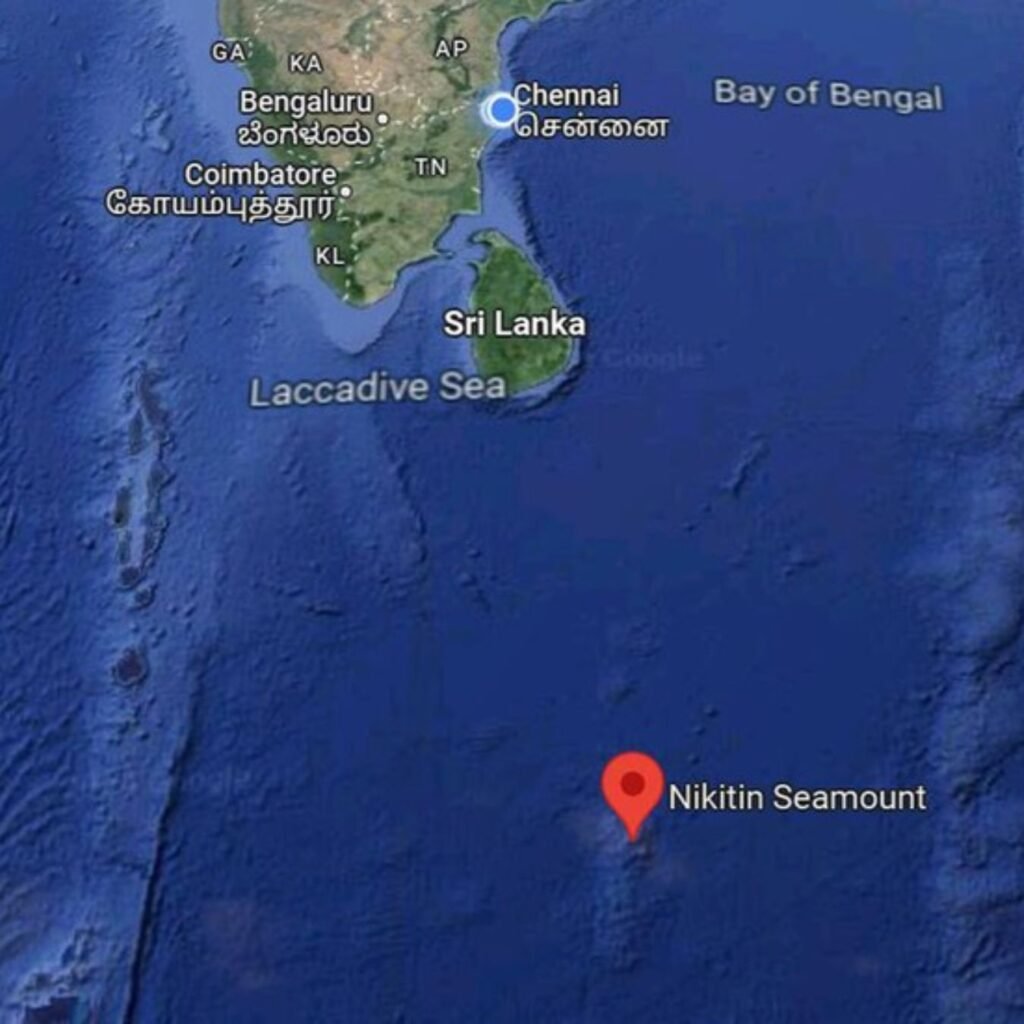
India is aggressively pursuing the rights to explore the cobalt-rich Afanasy Nikitin Seamount, located in the central Indian Ocean, amid rising competition and geopolitical tensions. This underwater mountain is of significant interest due to its potential mineral wealth, particularly cobalt, which is crucial for electric vehicle batteries and the green energy transition.
The Significance of the Afanasy Nikitin Seamount
The Afanasy Nikitin Seamount is a geological formation in the Indian Ocean, named after the famous 15th-century Russian explorer. It is part of the international seabed area governed by the International Seabed Authority (ISA). This region is known for its abundance of polymetallic nodules, including manganese nodules, which are rich in essential minerals like cobalt, nickel, and copper.
The global demand for these minerals has been steadily increasing due to their critical role in the production of batteries for electric vehicles, renewable energy technologies, and various electronic devices. The Afanasy Nikitin Seamount represents a significant opportunity for India to secure these vital resources and reduce its dependency on imports.
India’s Strategic Move in Deep-Sea Mining
India’s interest in the Afanasy Nikitin Seamount is driven by the need to secure a stable supply of cobalt and other critical minerals. With the global shift towards electric vehicles and renewable energy, the demand for these minerals has skyrocketed. Deep sea mining offers a promising solution to meet this demand.
The Indian government’s Deep Ocean Mission is at the forefront of this initiative. This ambitious project aims to develop advanced technologies for deep-sea exploration and mining, including a state-of-the-art deep-sea mining submersible. The mission’s success is vital for India to achieve its net-zero emissions goal by 2070.
The Importance of Polymetallic Nodules
Polymetallic nodules, also known as manganese nodules, are small, potato-shaped mineral deposits found on the ocean floor. They contain high concentrations of manganese, nickel, cobalt, and copper. These nodules are formed over millions of years through the gradual accumulation of mineral layers around a core, such as a small rock or fossil.
The abundance of these nodules in the Afanasy Nikitin Seamount area makes it a prime target for deep-sea mining. The extraction of these minerals can help India secure a steady supply of critical raw materials needed for its growing industries. Additionally, the economic benefits of mining these resources can significantly contribute to India’s GDP and create numerous job opportunities.
Geopolitical Tensions and Competing Claims
India’s bid to explore the Afanasy Nikitin Seamount has been temporarily put on hold due to competing claims, presumably from Sri Lanka. This has added a layer of complexity to India’s efforts. Additionally, China’s increasing presence and influence in the Indian Ocean have heightened the urgency for India to secure its interests in the region.
China already dominates the global cobalt supply chain and holds several deep-sea exploration contracts in the Indian Ocean. India’s race to explore the Afanasy Nikitin Seamount is not just about securing mineral resources but also about countering China’s strategic positioning.
The Role of the International Seabed Authority
The International Seabed Authority (ISA) plays a crucial role in regulating deep-sea mining activities and resolving territorial disputes. Established under the United Nations Convention on the Law of the Sea (UNCLOS), the ISA is responsible for overseeing the exploration and exploitation of mineral resources in the international seabed area.
India’s application to explore the Afanasy Nikitin Seamount is currently under evaluation by the ISA. The outcome of this evaluation will have significant implications for India’s Deep Ocean Mission and its overall strategic objectives in the Indian Ocean. The ISA’s decision will also set a precedent for future deep-sea mining endeavors by other countries.
Deep Ocean Mission: Technological Advancements
India’s Deep Ocean Mission is a multi-faceted initiative aimed at exploring and harnessing the resources of the deep ocean. The mission involves the development of cutting-edge technologies for deep-sea mining, underwater robotics, and marine biodiversity studies.
Conclusion: India’s race to explore the Afanasy Nikitin Seamount symbolizes its strategic shift towards securing critical resources for its economic and energy security. As the nation navigates the complexities of deep-sea mining, its actions will not only impact its own future but also contribute to the evolving dynamics of deep-sea exploration on a global scale.
Can you be more specific about the content of your article? After reading it, I still have some doubts. Hope you can help me.
Your article helped me a lot, is there any more related content? Thanks!